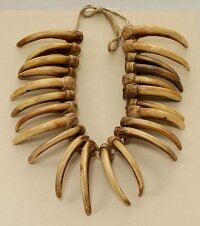|
Contact the seller in advance before paying for the order! Gold, The Metal That Has Bedazzled Us For Thousands Of Years.
A brief history: The first deposits of this precious metal was probably found in rivers. Objects have been found in Spanish graves that dates back to paleolithic period some 40 000 BC, and in 2500 BC it was described as more plentiful than dirt. It is mentioned in several epics and religious inscriptions. We all remember the story on how the people made the golden calf while Moses was up on the mountain, receiving the 10 commandments. Not to speak of the rumors about the holy shrine in which the 10 commandments were put. The shrine was never found, nor was the holy grail. Instead Egypt provided the world with the most awesome discovery in our history. The world was stunned when the grave of Tutankhamen was discovered in the beginning of the 20th century. There were many reasons for that. It was the only untouched tomb ever found in Egypt. Rumors said that it was cursed since people died who had worked in or around the discovery site. What stunned us most, was the amount of gold and jewelry found in the grave, despite the fact that he was not a old and cherished king, but merely a boy king of 18. Imagine what the tombs of larger and more powerful kings, like Ramses III, must have contained. What was found in Tutankhamen grave is the largest collection of gold and jewelry in the world. The famous mask itself is considered to be one of the most stunning artifacts ever found. So we know that this precious metal was used in Egypt 4000 years BC, and that they mastered hammering it into leafs and castings and even the art of Cloisonne (they did invent glass, so this is not so surprising). Egypt found large deposits of the metal in Nubia about 2500 BC and it was used as the international standard in trading. The coin was invented in 700 BC as an accepted measure of aurum and silver, and took over as a more stable payment. Greeks and Romans mined these metals over large areas, and the coin made the world economy possible because of the standard weight of the coins. Trade spread the use of coins around the world. 
When the Roman empire fell, the mining for precious metals halted for nearly 1000 years, but came back into the spotlight when the Spanish conquistadors discovered America in 1492. (Leif Eirikson from Norway was actually the first to discover America, but has been forgotten in history for some reason.) Aurum was a huge part of the Pre Colombian culture. The art of using it was highly developed and they mastered most of the techniques known as filigree, granulation, pressing and hammering, inlay and lost wax methods. The Spanish sadly destroyed most of this when they melted the artifacts they stole from the natives down, and brought it back with them to Spain. The only survived pieces of their precious art has therefor not been found in south America, but in European graves and excavations. Gold diggers (who actually DUG for it) went almost crazy when it was discovered large deposits in California in 1848, which lead to the famous Gold rush. In 1951 the rush in Australia began, in south Africa in 1884 and in Canada in 1897. The result of these rushes was that the amount of aurum around the world increased the supply. Earlier it was solemnly available for royalty, but the new amount soon became attainable for people of all classes. Today Italy is the forefront of the gold jewelry industry. In the Renaissance the Italians supported metal smiths as well as sculptors and painters. The largest source of demand for aurum is the jewelry industry, which actually has exceeded the western mine production. What exactly is Gold? It is considered to be the easiest metal to work with of all metals. It can easily be shaped, hammered extremely thin and drawn into wire. Unfortunately or fortunately, depending on how you see it, it is also a very rare metal and is expensive to mine, which is why gold is so much more expensive to buy than other precious metals. It ranges as the second most precious metal, next to platinum Because it is so soft it is mixed with other metals to make it more durable and firm. This mixing of metals is called alloy. The amount of gold in an alloy is measured in Karat a scale from 24 to 0. In its purest form it is 24 Karat which is 99,9% gold. This is not suitable for jewelry making because it is to soft. 18 Karat is 18 parts aurum and 6 parts of another metal, 14 karat is 14 parts and 10 parts of other metals etc. An alloy can be called gold down to 10 Karat, but not below. Used in jewelry it is usually 22, 18 or 14 Karat. 18 Karat is considered the industrial standard. If it is alloyed with silver colored metal, usually nickle or Palladium you get white gold which is very hard. When rose, red or pink it is alloyed with copper. Yellow with with equal parts of copper and silver. More silver gives a more greenish color. When blue it is alloyed with iron and purple is alloyed with aluminum. The release from nickel in this precious metal is controlled by legislation in Europe, since it is toxic. Alternative white alloys is based on palladium, silver and other white metals, but palladium is more expensive than nickel, so nickel is still in use as an alloy. When buying beads or jewelry you may have noticed that some of them are labeled as plated or filled. These are descriptions on how the precious metal is attached to a base metal, which usually is copper or brass. G.filled: G.plated: The individual atoms of aurum is moved around and out of the solution and then evenly spread onto the object being plated. The durability of the plate depends on the thickness of the plating. I have found that plated beads, clasps etc, tarnish over time and become darker. I believe this is because the plating is very thin and does not protect the base metal enough, so when that starts to tarnish, it is visible through the thin coat of precious metal. I believe that to avoid this, you must go for higher quality, which is more expensive of course, but may be worth it. Well, that was it about gold. See you later! Return from Gold In Jewelry Making to Metals In Jewelry Making Leave a comment ,I would love to hear your opinion on this page. Good or bad, it will help me making this Site better. |





